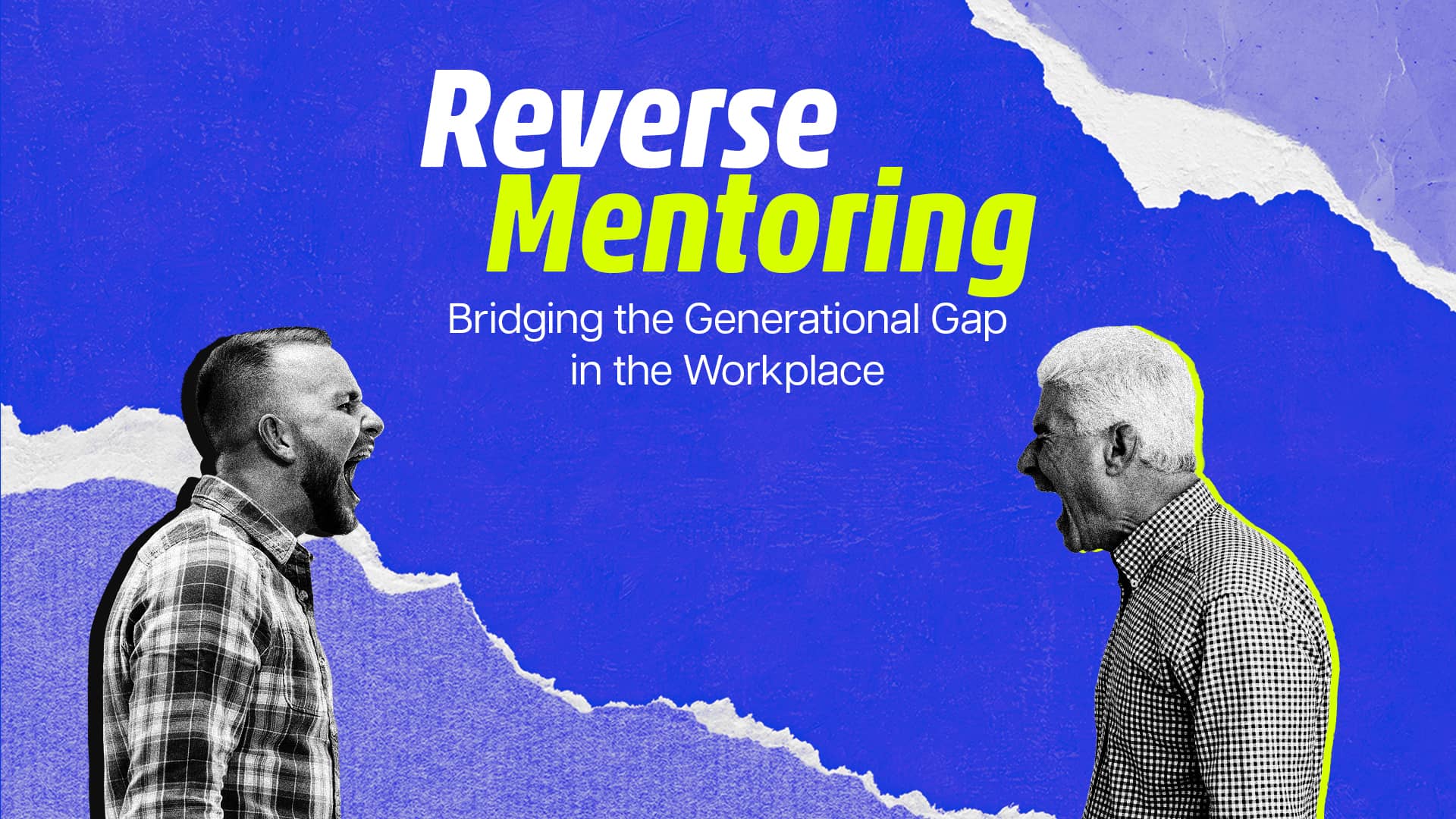Discover the concept of reverse mentoring, where younger employees mentor senior leaders, and how it promotes knowledge sharing, collaboration, and understanding across different generations in the workplace.
In today’s rapidly evolving workplace, bridging the generational gap is essential for fostering collaboration, innovation, and mutual understanding. Traditional mentoring programs have typically followed a top-down approach, with senior employees guiding and mentoring their younger counterparts. However, there is a new paradigm that is gaining traction—reverse mentoring. Reverse mentoring flips the script, where younger employees take on the role of mentors, sharing their expertise and insights with senior leaders.
In this blog post, we will explore the concept of reverse mentoring, its benefits, and how it can bridge the generational gap in the workplace.
- Understanding Reverse Mentoring: Reverse mentoring is a collaborative learning relationship where younger employees, often from younger generations such as Millennials or Gen Z, mentor senior leaders, who may belong to older generations like Baby Boomers or Gen X. It is an opportunity for the older generation to learn from the younger generation’s unique perspectives, skills, and experiences.
- Knowledge Sharing and Collaboration: Reverse mentoring encourages knowledge sharing and collaboration across generations. Younger employees bring fresh ideas, technological proficiency, and knowledge of emerging trends that can help senior leaders adapt to changing business landscapes. On the other hand, senior leaders can share their wisdom, industry insights, and guidance with younger employees, creating a symbiotic relationship that benefits both parties.
- Breaking Stereotypes and Bridging the Generational Gap: Reverse mentoring challenges stereotypes and preconceived notions about different generations. It fosters understanding, empathy, and respect between age groups, breaking down barriers and promoting a more inclusive and harmonious work environment. By actively engaging in reverse mentoring, organizations can cultivate a culture of diversity and inclusion.
- Leveraging Technological Proficiency: Younger employees often have a natural affinity for technology and digital tools. Through reverse mentoring, senior leaders can tap into the technological expertise of their younger counterparts, enhancing their digital literacy and staying abreast of the latest technological advancements. This knowledge transfer is invaluable in today’s digitally driven business landscape.
- Nurturing Leadership Development: Reverse mentoring provides younger employees with an opportunity to develop leadership skills and gain visibility within the organization. By assuming the role of mentors, they enhance their communication, coaching, and interpersonal skills, which are crucial for future leadership roles. This reciprocal mentoring dynamic nurtures a culture of continuous learning and professional growth.
- Implementing a Successful Reverse Mentoring Program: To establish a successful reverse mentoring program, organizations need to create a supportive framework. This includes clearly defining program goals, matching mentors and mentees based on shared interests and objectives, providing training and resources, and fostering a culture of open communication and feedback.
Conclusion:
Reverse mentoring is a powerful strategy for bridging the generational gap in the workplace. By embracing the concept of reverse mentoring, organizations can create an inclusive environment that values the contributions and perspectives of all generations.
Through knowledge sharing, collaboration, and understanding, reverse mentoring fosters a culture of continuous learning and growth. It paves the way for innovation, adaptability, and enhanced leadership development. Embrace reverse mentoring and unlock the full potential of your multi-generational workforce.










